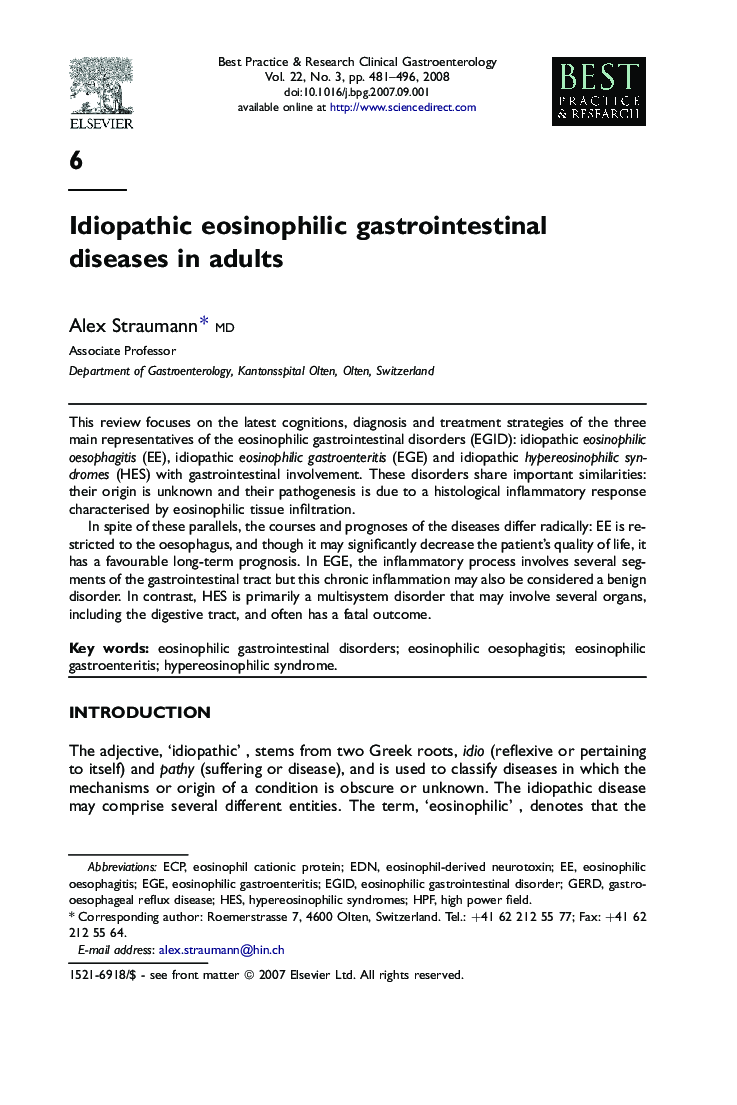| Article ID | Journal | Published Year | Pages | File Type |
|---|---|---|---|---|
| 3254796 | Best Practice & Research Clinical Gastroenterology | 2008 | 16 Pages |
This review focuses on the latest cognitions, diagnosis and treatment strategies of the three main representatives of the eosinophilic gastrointestinal disorders (EGID): idiopathic eosinophilic oesophagitis (EE), idiopathic eosinophilic gastroenteritis (EGE) and idiopathic hypereosinophilic syndromes (HES) with gastrointestinal involvement. These disorders share important similarities: their origin is unknown and their pathogenesis is due to a histological inflammatory response characterised by eosinophilic tissue infiltration.In spite of these parallels, the courses and prognoses of the diseases differ radically: EE is restricted to the oesophagus, and though it may significantly decrease the patient's quality of life, it has a favourable long-term prognosis. In EGE, the inflammatory process involves several segments of the gastrointestinal tract but this chronic inflammation may also be considered a benign disorder. In contrast, HES is primarily a multisystem disorder that may involve several organs, including the digestive tract, and often has a fatal outcome.
